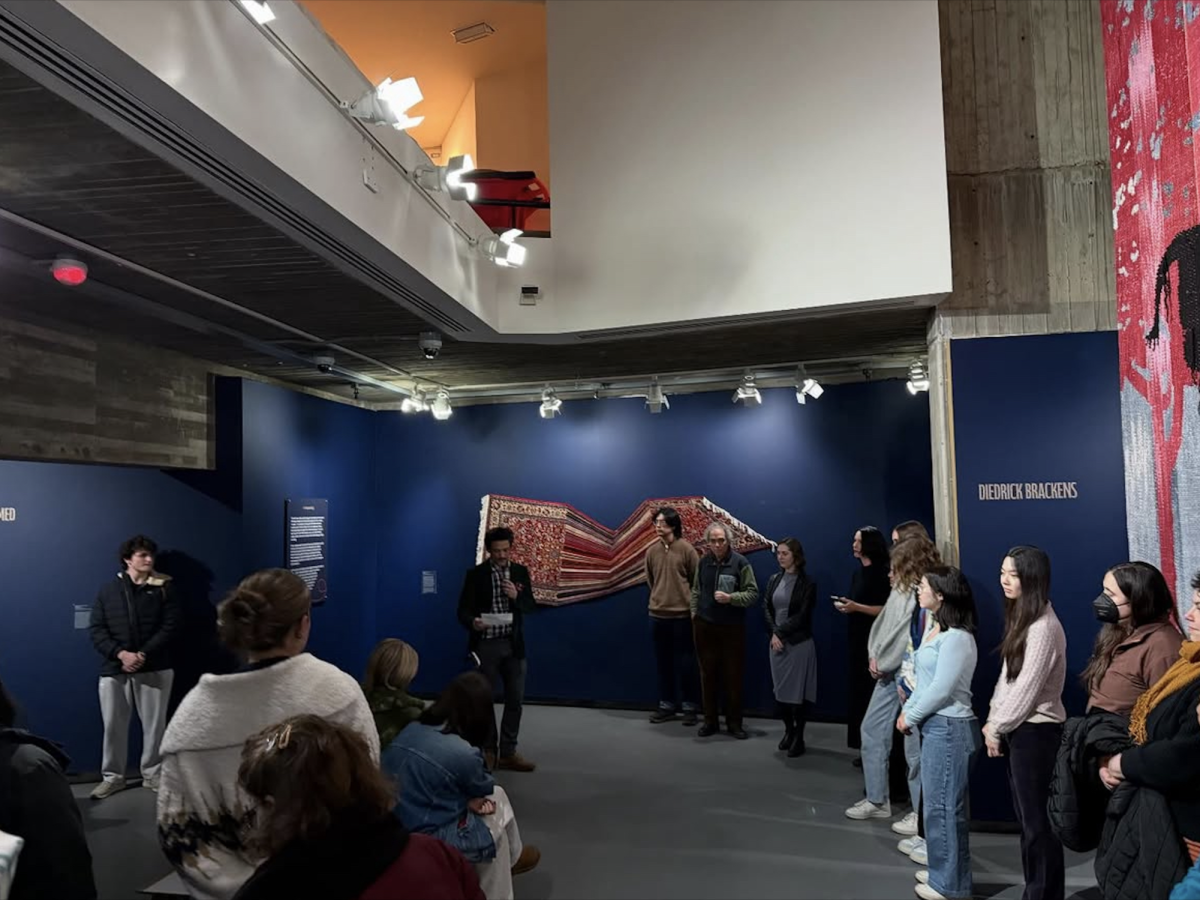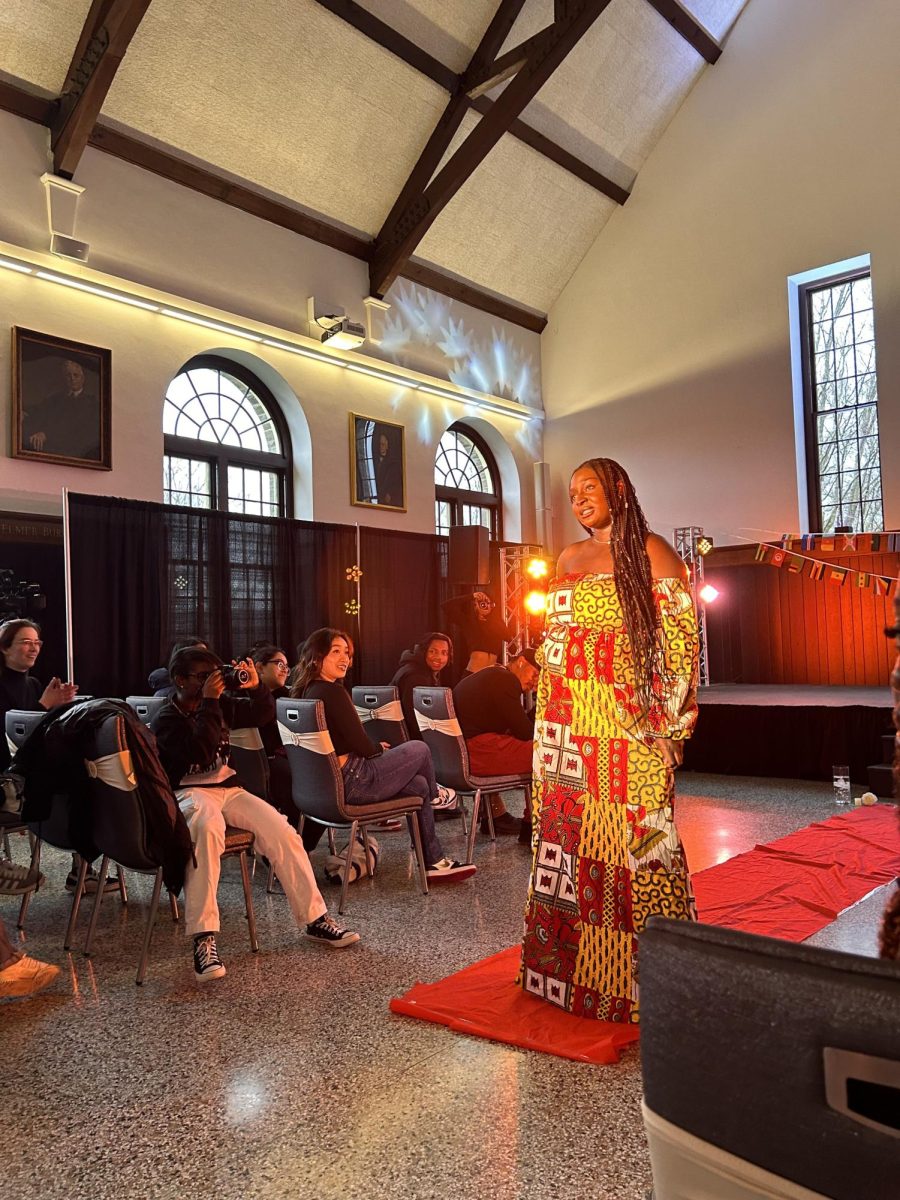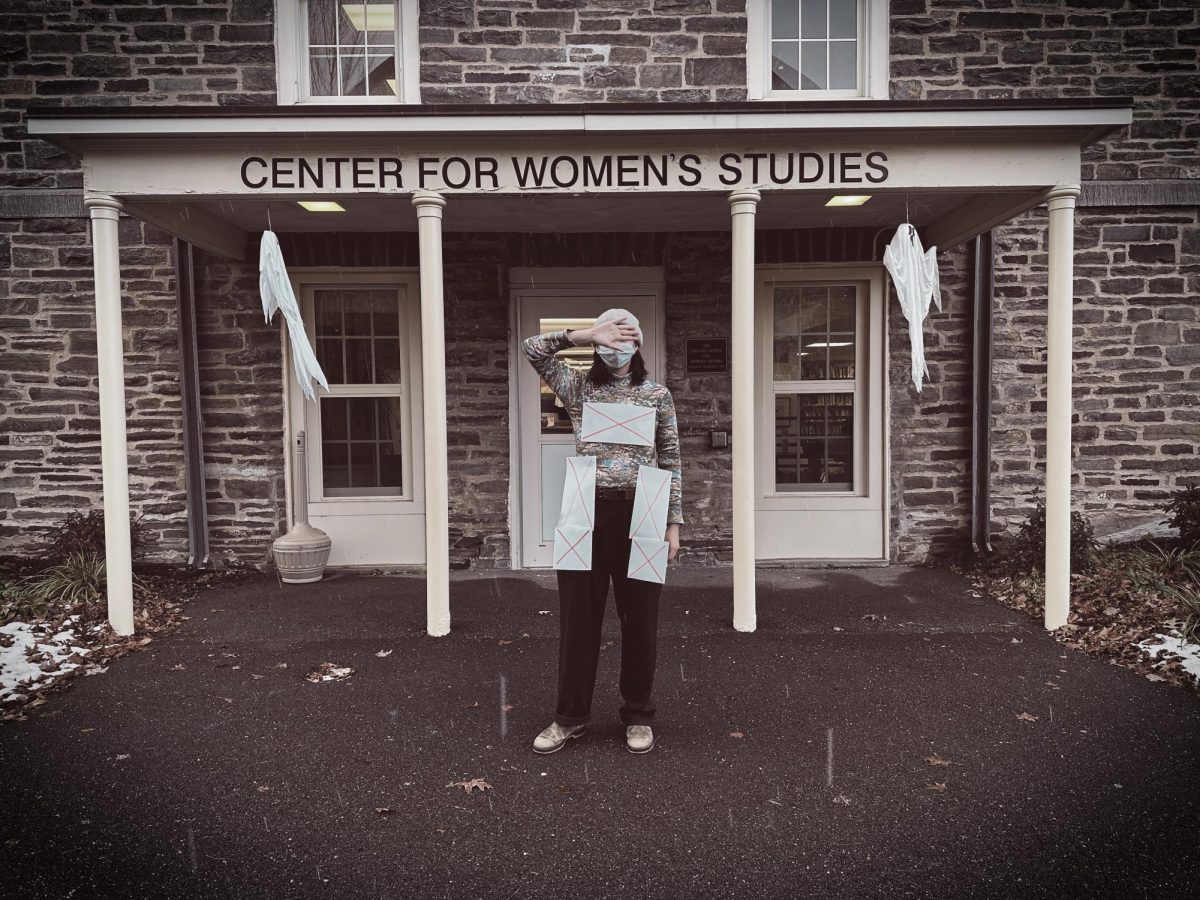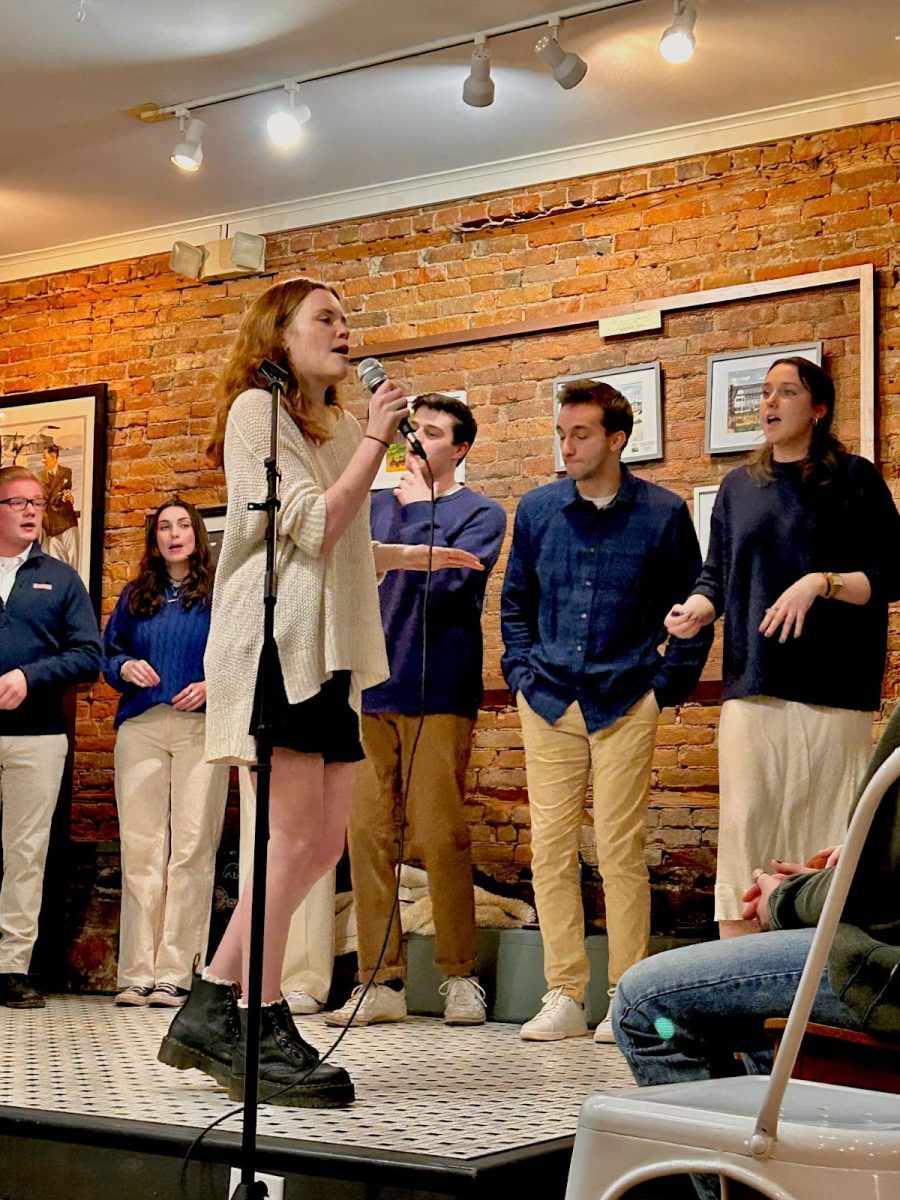Thursday, Feb. 20 was the opening reception for the exhibition “A Thought Is a Thread: Contemporary Artists Reworking Textile Traditions,” which is the third installment in a three-gallery celebration of textile arts. The exhibit was put on by the museum department faculty and student curators. Held in the Picker Art Gallery, the exhibition celebrated the history of the textile arts with a 17th-century textile, while also displaying work from contemporary textile artists including Joy Ray, Jordan Nassar, Faig Ahmed, Sanford Biggers, Diedrick Brackens, Melissa Cody and Suzanne Husky. These contemporary artists continue to challenge the traditional medium of textile art and break bounds to convey new meanings and messages. Nick West, co-director of university museums and Picker Art Gallery curator, commented on the new exhibition.
“The object of the gallery is to focus on contemporary weaving,” West said. “We have seven diverse artists here who each utilize distinctive and diverse methods. Hopefully this exhibit prompts people to ask, ‘what can we learn from weaving?’ I am very proud of the work our team has done and am proud of the product that we were able to put forward.”
The gallery opens with “A Mountain Loom” by Jordan Nassar. Nassar, a New York City-born artist of Palestinian descent, uses woven art to explore his identity. Nassar’s grand landscapes and colors draw on both Western and Eastern traditions to blend the two very distinct parts of himself. Nassar views many of his landscapes as utopian visions of a peaceful and harmonious Palestine, which is tinged with sadness because of the discord that has defined Palestine’s past and present.
Next displayed is artist Sanford Biggers’ “Slow Murder,” which depicts a murder of crows flocking around vaguely human shapes tinged with gold against a vast backdrop. Biggers often collaborates with historic themes and views them through a contemporary lens. “Slow Murder” has been interpreted to mean many things, including the long, violent history of African Americans, which continues to be a trouble that today’s generations contend with.
After Biggers, fellow contemporary artist Joy Ray is uniquely displayed in several places. The first two displays, “Approaching Abjection” and “Consensual Past” are made of articles of clothing and stuffed animals from various thrift stores, as well as dirt, sand, chalk, paint and scattered texts by various authors. With this technique, Ray evokes a sense of past stories: her somewhat ominous materials become veritable gadflies, prompting questions without providing any real answers. Whose clothes were these? Whose toys were these? How come they are here now? “Consensual Past” starkly differs from “Approaching Abjection” with Ray’s addition of a splurging and somewhat startling red that appears to be erupting from its dark and desolate backdrop. The theme of duality is often found in Ray’s artworks and is particularly striking in this instance.
Ray’s entries into the exhibition include works from her “Ghost Grids” series, which are made of tiny, delicate web-like threads that are intricately and tentatively strewn together to convey a sense of terrible tension, fragility and stress. Finally, Ray also showcased two pieces from her “Spectres” series, which investigates how the past haunts the present. Utilizing newspaper articles remade on a large scale with a burnt exterior and golden interior, Ray displays her investigations into what she calls the “text of subtext” in a powerful way.
Ray, whose work was featured heavily in the exhibition, attended opening night, where she spoke on her own displays and the importance of the exhibition itself.
“I am really honored to be here to celebrate this exhibition across three galleries. It’s ambitious, it’s thoughtful, it’s so beautifully done, and I think it is just a great showcase of textiles and weaving,” Ray said. “For me, weaving is a way to really directly engage with ideas of connection and rupture of things coming together, things falling apart; resilience, precariousness; ruin and repair. In my practice I think a lot about the seen and the unseen; the sad and the un-sad. Another way of thinking about this is subtext. […] It is the things that are not seen, [and] not said. It might be hidden or redacted, or removed, or haunting us, but we know it’s there. We can sense that it is there […] though we might not always know how it is affecting us.”
Diedrick Brackens continued the exhibition’s theme of exploring history and subtext through examining and commemorating stories and experiences of African Americans. In “The Last Labor,” Brackens adapts an Ancient Greek mythological story of Heracles. In the legend, Heracles defeats Cerberus after a heroic bout, during which he is bitten by the protector of the underworld. In Bracken’s adaptation, Heracles is replaced by a mysterious dark figure that runs up a tree in retreat from Cerberus. This piece has been interpreted to depict the violent policing and oppression of African Americans into the modern day.
Faig Ahmed completes the exhibit’s collection of contemporary artists. Ahmed brings in Azerbaijani culture by incorporating traditional Azerbaijani themes and employing a community of local women weavers who realize his digitally envisioned design using traditional hand-knotted carpets that incorporate elements of surreal design. Ahmed’s weaves drip, stretch and flood from the wall to the floor, which create interesting optical illusions and beautiful patterns.
The exhibition was a triumph of coordination and vision that has brought to Colgate University perspectives and sources of knowledge and emotion that help to define our modern spirit.
Senior Aleksia Taci, one of the student coordinators for the exhibition, experienced the satisfaction that comes with the process of curating.
“It was a great learning experience,” Taci said. “It is fascinating to see the process go from the meaning we wanted to convey to the methods of formation for how we could convey it. It was a wonderful and collaborative process that each person gave and took a lot from.”



















